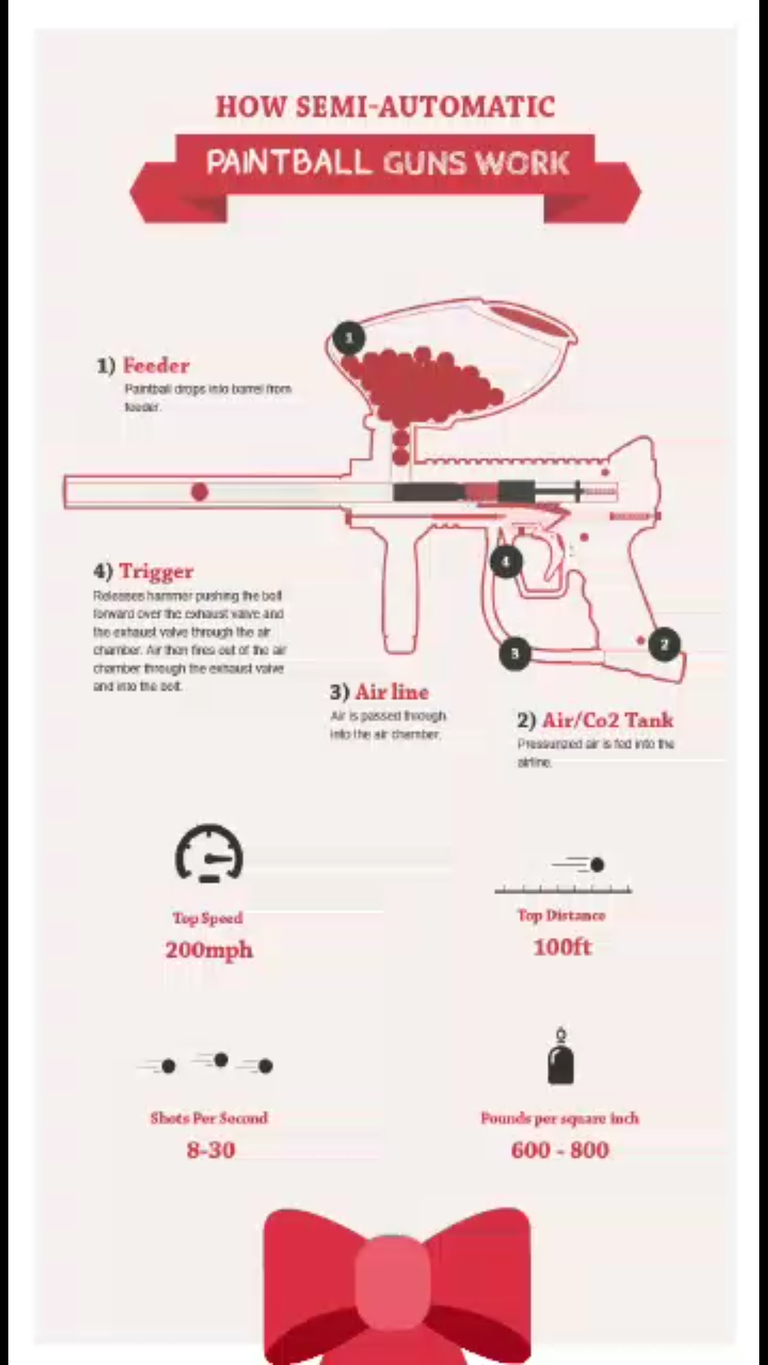Paintballs are expelled from the end of the barrel by a short and controlled burst of gas, generally released from a canister of carbon dioxide held within the gun but in some cases nitrogen gas or even regular air can be used depending on the type of gun you’ve got in your hands.
The paintballs are fed in front of the firing assembly by the hopper, ideally keeping a single ball in place until the next pull of the trigger. The hopper places the ammunition directly in front of a piston which is powered by air, springing forward and flinging the ball at speed in the direction the marker is aimed.
The firing assembly will vary from gun to gun, but in general it will consist of a gas valve which is sealed against the constant release of the gas of choice and allows the bolt to move forward.
The trigger itself releases the sear, a small piece which holds everything in place against the pressure from the canister and causes the firing assembly to move forward as the gas is released. This pushes the ball out at speed, and what happens next will depend on the type of gun that’s being used.
Paintballs are fired at relatively low speeds, most fields limit guns to about three hundred feet per second. This speed can leave a bruise or welt at close distances but it’s unlikely to cause any serious harm at a distance greater than ten feet or so, especially if the person being hit is wearing appropriate gear.
That said, eye and ear injuries can, and will, occur if you’re not wearing a mask and some form of ear protection. Most fields won’t let you play without one anyways, but even if you’re the modern day incarnation of Rambo keep your mask on if you’re just playing with friends somewhere without safety rules in place.
eye and ear injuries can, and will, occur if you’re not wearing a mask and some form of ear protection. Most fields won’t let you play without one anyways, but even if you’re the modern day incarnation of Rambo keep your mask on if you’re just playing with friends somewhere without safety rules in place.
Hi! I am a robot. I just upvoted you! I found similar content that readers might be interested in:
https://www.quora.com/How-do-paintball-guns-work